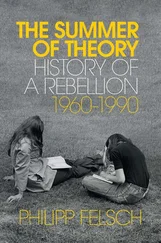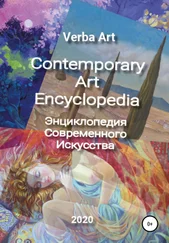But, as those countries which I have described do not appear to have any desire of being conquered, and enslaved, murdered or driven out by colonies, nor abound either in gold, silver, sugar or tobacco; I did humbly conceive they were by no means proper objects of our zeal, our valour, or our interest.
IIB3 Louis Antoine de Bougainville (1729–1811) On Tahiti
The first European encounter with the island of Tahiti was by the English navigator Samuel Wallis in 1767, but the most resonant was that by the French admiral Bougainville less than a year later. Bougainville’s lyrical, not to say romanticized, account had a considerable impact on French radical thought. The tension between two conflicting ideas of the human past, as between a ‘war of all against all’, from which a state of civilization had been hard‐won (cf. IC9) and a benign state of nature the trappings of ‘civilization’ served only to obscure (cf. IC12, IIC2 and 9) had immediate political implications in the eighteenth century. For figures such as Rousseau, Diderot and Voltaire, the latter vision of the ‘noble savage’ was a powerful exemplar in their critique of the artificiality and corruption of the ancien regime . Bougainville’s account of life in Tahiti seemed to offer support for their case. Bougainville had left France in late 1766 and returned there in March 1769. He landed at Tahiti in April 1768, staying there for fewer than 10 days before moving on to other islands in the South Pacific and heading home via Batavia in the Dutch East Indies. His Voyage autour du monde was published in 1771, and translated into English by John Reinhold Forster (who was to travel as a naturalist on the second Cook voyage to the Pacific a year later). Bougainville’s text is studded with classical allusions, the most important being the name he gave to Tahiti: Nouvelle Cythère . In classical mythology, Cythera was the birthplace of Aphrodite/Venus. Its best‐known imagining in visual art is Watteau’s Embarkation for the Isle of Cythera , now in the Louvre. The ‘Elysian fields’ were the home of the blessed after death – in effect, paradise. ‘Anacreontic’ is a reference to the verse of the Greek poet Anacreon. Our extracts are taken from A Voyage Round the World by Lewis de Bougainville , translated from the French by John Reinhold Forster, London, 1772, Part II, Chapters 1, 2 and 3, pp. 212–14, 217–23, 227–9, 242, 244–5, 250–1 and 257.
During the night, between the third and fourth, we turned to windward, in order to get more to the northward. With joy we saw fires burning on every part of the coast, and from thence concluded that it was inhabited….
The 4th, at day‐break … We run with all sails set towards the land, standing to windward of this bay, when we perceived a periagua coming from the offing, and standing for the land, and making use of her sail and paddles. She passed athwart us, and joined a number of others, which sailed a‐head of us, from all parts of the island. One of them went before all the rest; it was manned by twelve naked men, who presented us with branches of bananas; and their demonstrations signified that this was their olive‐branch. […]
The two ships were soon surrounded with more than an hundred periaguas of different sizes, all which had outriggers. They were laden with cocoa‐nuts, bananas, and other fruits of the country. The exchange of these fruits, which were delicious to us, was made very honestly for all sorts of trifles; but without any of the islanders venturing to come aboard. We were obliged either to come into their periaguas, or shew them at a distance what we offered in exchange; when both parties were agreed, a basket or a net was let down by a rope; they put their goods in it, and so we did ours; giving before they had received, or receiving before they gave indifferently, with a kind of confidence, which made us conceive a good opinion of their character. We further saw no kind of arms in their periaguas, in which there were no women at this first interview. The periaguas kept along‐side of the ships, till the approach of night obliged us to stand off shore, when they all retired. […]
[6th] As we came nearer the shore, the number of islanders surrounding our ships increased. The periaguas were so numerous all about the ships, that we had much to do to warp in amidst the croud of boats and the noise. All these people came crying out tayo , which means friend, and gave a thousand signs of friendship; they all asked nails and ear‐rings of us. The periaguas were full of females; who, for agreeable features, are not inferior to most European women; and who in point of beauty of the body might, with much reason, vie with them all. Most of these fair females were naked; for the men and the old women that accompanied them, had stripped them of the garments which they generally dress themselves in. The glances which they gave us from their periaguas, seemed to discover some degree of uneasiness, notwithstanding the innocent manner in which they were given; perhaps, because nature has everywhere embellished their sex with a natural timidity; or because even in those countries, where the ease of the golden age is still in use, women seem least to desire what they most wish for. The men, who were more plain, or rather more free, soon explained their meaning very clearly. They pressed us to choose a woman, and to come on shore with her; and their gestures, which were nothing less than equivocal, denoted in what manner we should form an acquaintance with her. It was very difficult, amidst such a sight, to keep at their work four hundred young French sailors, who had seen no women for six months. In spite of all our precautions, a young girl came on board, and placed herself upon the quarter‐deck, near one of the hatch‐ways, which was open, in order to give air to those who were heaving at the capstern below it. The girl carelessly dropt a cloth, which covered her, and appeared to the eyes of all beholders, such as Venus shewed herself to the Phrygian shepherd, having, indeed, the celestial form of that goddess. Both sailors and soldiers endeavoured to come to the hatch‐way; and the capstern was never hove with more alacrity than on this occasion.
* * *
The chief of this district conducted and introduced us into his house, in which we found five or six women, and a venerable old man. The women saluted us, by laying their hands on their breasts, and saying several times tayo . The old man was the father of our host. He had no other character of old age, than that respectable one which is imprinted on a fine figure. His head adorned with white hair, and a long beard; all his body, nervous and fleshy, had neither wrinkles, nor shewed any marks of decrepitude. This venerable man seemed rather displeased with our arrival; he even retired without answering our civilities, without giving any signs of fear, astonishment, or curiosity; very far from taking part in the raptures all this people was in at our sight, his thoughtful and suspicious air seemed to shew than he feared the arrival of a new race of men would trouble those happy days which he had spent in peace. […]
The chief then proposed that we should sit down upon the grass before his house, where he ordered some fruit, broiled fish and water to be set before us: during the meal he sent for some pieces of cloth, and for two great collars or gorgets of oziers, covered with black feathers and shark’s teeth. They are pretty like in form to the immense ruffs, worn in the time of Francis the first. One of these he put upon the neck of the Chevalier d’Oraison, another upon mine, and distributed the cloths….
The chief and all his people accompanied us to our boats. We were almost come to them when we were stopped by an islander, of a fine figure, who lying under a tree, invited us to sit down by him on the grass. We accepted his offer: he then leaned towards us, and with a tender air he slowly sung a song, without doubt of the Anacreontic kind, to the tune of a flute, which another Indian blew with his nose: this was a charming scene, and worthy the pencil of a Boucher. […]
Читать дальше












